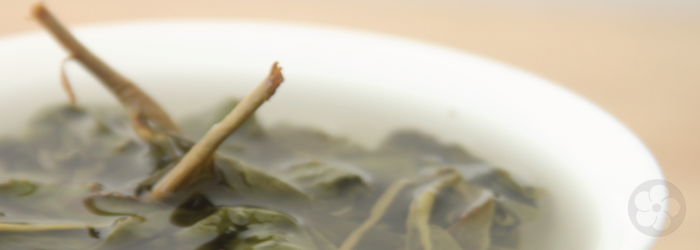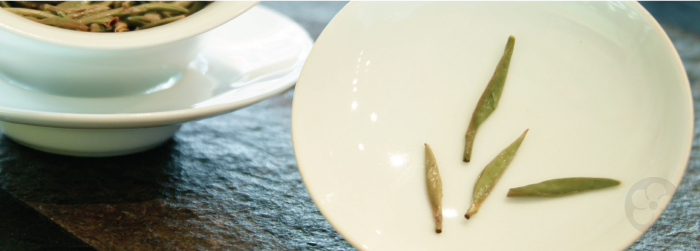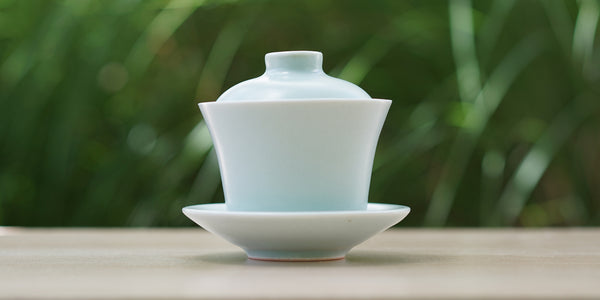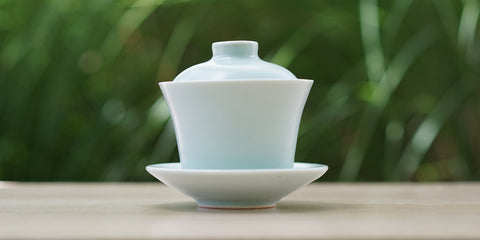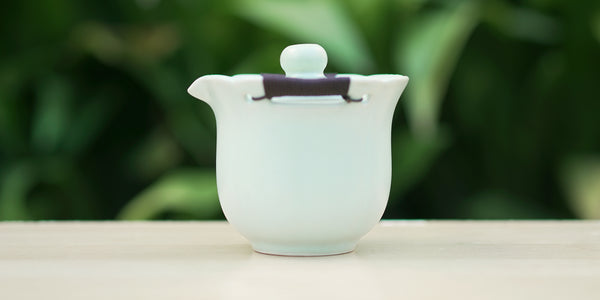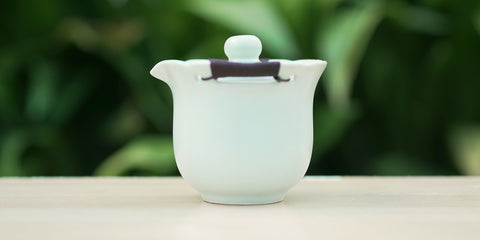|
IDENTITY >
|
ADVANTAGES >
|
HOW TO USE >
|
GAIWANS TO TRY >
|
|
IDENTITY >
|
ADVANTAGES >
|
|
HOW TO USE >
|
GAIWANS TO TRY >
|
What Is A Gaiwan?
Literally translated from Chinese, gaiwan means “lidded bowl”. In truth, this is exactly what it is. The most basic gaiwans are a simple bowl with a lid. Most gaiwans on the modern market also include a saucer or plate. This three-part form developed during the Ming Dynasty. At the time. powdered leaves were going out of style. Instead, Chinese tea drinkers began brewing whole leaves.
A gaiwan is a graceful alternative to a teapot. The bowl holds tea leaves and hot water. The lid, casually tipped, forms an adjustable “spout”. The plate is used instead of a handle, helping to avoid burning fingers on the hot bowl while pouring.
Traditionally, the lid strained the leaves as the tea drinker sipped from the bowl. In fact, gaiwans are still used this way in many parts of China. But gaiwans are now used more often to brew tea in gong fu style. They've gained favor among connoisseurs for the incredible amount of control they allow. We use gaiwans on a daily basis in our shop to check leaf quality. They are flavor neutral and offer a great view of the tea leaves during the brewing process.
Advantages of Using Gaiwans
Gaiwans are a versatile brewing vessel. They are perfect for tea drinkers interested in tasting a wide variety of teas. Using the lid as a strainer allows for complete control over the size of the opening and the speed of the pour. Also, the wide bowl allows leaves plenty of room for expansion. For all these reasons, gaiwans can be used to brew any type of Camellia sinensis leaves.
They are also the best vessel to use when testing the quality of tea leaves. The wide mouth of the brewing bowl offers a clear view of the steeping leaves. This allows for on-the-spot adjustments in the brewing technique. It is much easier to learn about a new tea in a white gaiwan than in a dark teapot with a small opening.
Finally, gaiwans are usually made of glazed porcelain, and are thus flavor neutral. We always recommend tasting a new tea in a gaiwan to get a true measure of it’s flavor and quality. Only then do we recommend brewing it in an unglazed yixing pot.
How To Use A Gaiwan
The traditional method of using a gaiwan can be tricky for beginners. The middle finger and thumb hold the flared edge of the bowl, and the index finger steadies the lid. But depending on the thickness of the lip, the edge can be hot!
Instead, you can also spread your fingers against the bottom of the saucer, and place the thumb on the lid. This avoids touching the hot bowl at all, and can be an easier modification.
But our favorite method is one that is rather uncommon. For the greatest stability, we recommend using two hands. Place your fingers under the plate on either side, and your thumbs at the top of the lid’s knob. Tilt the lid to form an opening, and rotate the gaiwan toward your body to pour. For a crystal clear brew, tea can be poured through a fine mesh strainer. Placed in the top of the server or drinking cup, the strainer will catch any small leaf bits that may escape.
It can be tempting to start practicing with a cheap, mass produced gaiwan. A quality piece of teaware can feel like a commitment. But in mass production, sacrifices in functional details are often made.
Look for a deep, defined seat in the plate where the foot of the bowl will not rattle or slip around. Test the movement of the lid, as well. A gaiwan lid should sit naturally off-kilter to create a small opening on one side. It should not slip when pressure is applied on the knob. Finally, the flared edge of the bowl should be quite thin. This will disperse heat and create a precise pour without dribbling. Shortcuts in these details mean cheap gaiwans are often harder to hold and easier to break.



